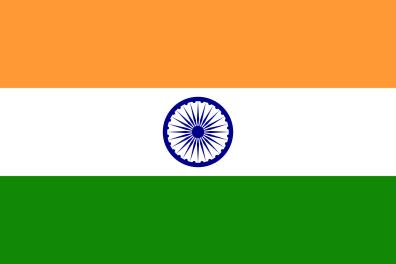This goes
to space
EOS-3 (aka GISAT-1)
EOS-3
EOS-3 is also known as GISAT-1 (Geostationary Imaging Satellite -1).
The satellite is an Indian Earth observation craft that will operate from geostationary orbit (35,786 kilometers above Earth sea level) at 83° East above the equator just south of India and Sri Lanka.
Satellites in geostationary orbit travel at just the right speed to always remain over the same exact same spot on Earth's surface.
Once joined on orbit by its twin, EOS-5 (aka GISAT-2), the two satellites will provide images of any place in India every 5 minutes and will be able to see clearly down to 50 meters in the visible range and down to 1.5 kilometers in the near infrared and thermal range.
Image: ISRO

On this
rocket
GSLV Mk II
Geosynchronous Satellite Launch Vehicle Mark II (GSLV Mk II) is the launch vehicle developed by India, to launch communication satellites in geo transfer orbit using cryogenic third stage. Initially Russian GK supplied cryogenic stages were used. Later cryogenic stage was indigenously developed and inducted in Jan 2014 from GSLV D5 onwards. This operational fourth generation launch vehicle is a three stage vehicle with four liquid strap-ons. The flight proven indigenously developed Cryogenic Upper Stage (CUS), forms the third stage of GSLV Mk II. From January 2014, the vehicle has achieved six consecutive successes.
Stats
Height: 51.73 m (With Ogive PLF)
Number of Stages: 3
Lift Off Mass: 420 tonnes
Payload to GTO: 2,250 kg (4,960 lbs)
Payload to LEO (Low Earth Orbit) : 6,000 kg (13,227.7 lbs)
Credit: ISRO

From this
launch site
Second Launch Pad - Satish Dhawan Space Centre, India
The Second Launch Pad (SLP) at the Satish Dhawan Space Centre (SDSC) in Sriharikota, India, is one of ISRO’s primary launch complexes. Operational since 2005, it was developed to support the growing number of satellite launches and to reduce dependence on the older First Launch Pad. The SLP is a versatile and modular facility, capable of launching all of ISRO's current rockets, including the Polar Satellite Launch Vehicle (PSLV), Geosynchronous Satellite Launch Vehicle (GSLV), and LVM3 (formerly GSLV Mk III).
Located on the eastern coast of India, the site allows for launches over the Bay of Bengal, ideal for a range of orbital inclinations. The SLP features a Mobile Service Tower (MST) and a Fixed Umbilical Tower (FUT) for vehicle integration, fueling, and payload access, enhancing launch preparation efficiency and safety. It has been used for major missions like Chandrayaan, Mars Orbiter Mission, and several NavIC satellites.
Image courtesy of ISRO.

Here's where to view EOS-3 (aka GISAT-1)
Viewing Sites
- Satish Dhawan Launch Viewing Gallery
GET THE SUPERCLUSTER APP
THE SUPERCLUSTER PODCAST
A podcast exploring the amazing milestones that changed space history, the wildest ideas that drive our future, and every development in this new Golden Age of Space.
Donate to support
Your support makes the Astronaut Database and Launch Tracker possible, and keeps all Supercluster content free.
SupportCOPYRIGHT 2021 SUPERCLUSTER LLC
